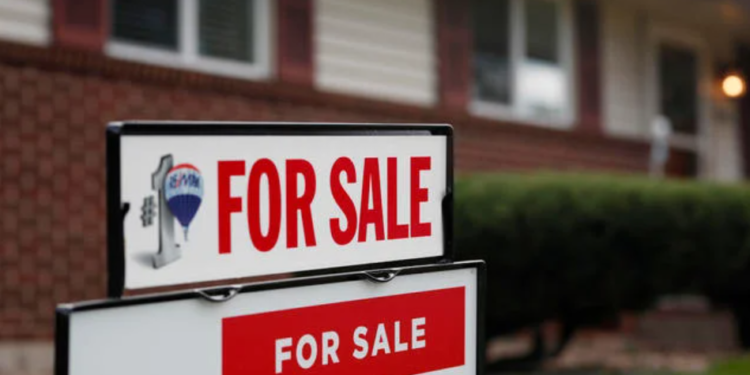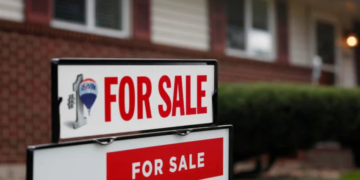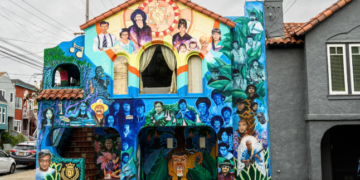March 21, 2025 Story by: Editor
Property values for Black homeowners are rising nationwide, with significant increases seen in the Midwest and Southern states. After years of trailing behind, this growth could help narrow the racial wealth gap and bring the American dream closer to reality for many Black families.
Between 2016 and 2023, home values in majority-Black ZIP codes increased by an average of 84%, surpassing the 69% rise in majority-white ZIP codes, according to a Stateline analysis of federal housing and census data.
A combination of factors—including a hot housing market during the COVID-19 pandemic, a persistent housing shortage, and new government efforts to address appraisal bias—may be contributing to this shift toward property value parity for Black homeowners.
Morgan Williams, an attorney for the National Fair Housing Alliance, emphasized that the push for fairer housing appraisals is still in its early stages. He also noted that even when appraisals are unbiased, they often rely on past sales, which can reinforce historical undervaluation.
“There was, during the pandemic, an increase in Black wealth. There may be some broad policy actions you could trace that to, but I think a lot of that is going to be more housing-market driven,” Williams said.
Research has shown that homes in majority-Black areas are more likely to be appraised below purchase offers compared to those in majority-white neighborhoods. While this disparity remains, recent federal data indicates some improvement.
The Stateline analysis found that the recent rise in home prices in majority-Black neighborhoods marks a major departure from the trends of the previous 15 years.
From 2000 to 2016, home prices in majority-Black communities rose by 40%, compared to 48% in majority-white areas. Additionally, home values declined in more than 20% of Black ZIP codes during that time.
Since 2016, however, home values have increased in every majority-Black ZIP code tracked by the independent Federal Housing Finance Agency, with these neighborhoods, on average, experiencing greater growth than white ZIP codes.
Stateline’s analysis relied on Federal Housing Finance Agency data, which estimates price changes over time based on sales of similar properties, known as matched pairs. ZIP codes where most homeowners are Black were identified using U.S. Census Bureau estimates.
A University of Michigan study released in April found that in Detroit alone, rising home prices in Black neighborhoods have created nearly $3 billion in new wealth for Black homeowners. The study focused on trends from 2014 to 2022, following the city’s bankruptcy. Stateline’s findings suggest this trend extends well beyond Detroit, impacting the broader Midwest and South.
Nationwide, Stateline identified 92 majority-Black ZIP codes where home values have risen since 2016 after previously experiencing declines. These include nine ZIP codes in Detroit and six in Cleveland, along with others in states such as Georgia, Michigan, Ohio, Illinois, Alabama, Connecticut, Florida, Indiana, Kentucky, Missouri, North Carolina, Tennessee, and Wisconsin.
Additionally, 48 majority-Black ZIP codes across the South and Midwest saw home values surge by over 100 percentage points. For example, in Orlando’s 32811 ZIP code, home prices grew by 26% between 2000 and 2016 but skyrocketed to nearly 215% in the years since.
Suburban Atlanta’s Clayton County saw six of the top 10 price surges, partly due to the redevelopment of a long-vacant army base into the Gillem Logistics Center. This e-commerce and distribution hub is expected to generate 5,000 jobs and $4 billion in economic impact, according to Erica Rocker, the county’s economic development director.
In Clayton County, a newly built four-bedroom home—featuring Tesla chargers, an elevator, and keyless doors—recently sold for nearly $700,000. It replaced a smaller home that had been sold for just $40,000 in 2020. The ZIP code in Forest Park, 30297, recorded the largest national turnaround, shifting from a 27% loss to a 214% gain in home values.
Real estate broker Altimese Dees, who has represented Clayton County in property transactions, pointed out that home values were driven artificially low during the Great Recession. Foreclosures pushed the county’s average home price down to $66,500 in 2009, but it has since rebounded to about $253,000 this year.
“We’re thankful for the increase in value, but it’s more like getting back to where it should be,” Dees said.
“We had a historic number of foreclosures between 2006 and 2011. Investors were basically getting these houses for pennies on the dollar,” she explained. “It was a result of people losing their jobs and income during this time, as well as subprime lending targeting our mostly African American and minority community.”
In Detroit, homeowner Jelani Bayi purchased his first home in 2021 in the Rosedale Park neighborhood’s 48219 ZIP code. He believes he is building wealth while establishing a future home for his family.
“I definitely think it’s increased in value. I’ve put a lot of time and resources into the house, and values are increasing in Detroit,” Bayi said. “All my adult life I’ve always wanted to be a homeowner, and it was the right time. I just love it. It was very important to me to live in Detroit.”
Bayi took advantage of low interest rates in 2021 to buy his four-bedroom brick home for $275,000. Zillow now estimates its value at $316,200.
Sandra Newman, a Johns Hopkins University professor who studies housing trends, suggested that the pandemic-fueled shift toward suburban living and remote work may have boosted home prices in some Black neighborhoods.
“Price trajectories, especially for Black homeowners, depend heavily on location, location, location. The old real estate saw definitely applies,” Newman wrote in an email to Stateline.
Several states, including Mississippi, New Jersey, and Texas, have taken steps to combat appraisal bias, following incidents that highlighted the issue.
In California, a Black couple saw their home’s appraisal increase by half a million dollars after they “whitewashed” it—replacing African American artwork with photos of a white family. They later settled their lawsuit for an undisclosed amount. Similar cases occurred in Maryland and Ohio, where Black homeowners received higher appraisals when white acquaintances posed as the owners.
Because appraisals rely on personal judgment, many states are now working to diversify their appraiser workforce. However, the field’s outdated training system requires thousands of hours of supervised work, making it difficult for young, aspiring appraisers to find mentors.
Despite these challenges, a Federal Housing Finance Agency review published in April found that the racial appraisal gap has narrowed in nearly every state. The gap between majority-Black and majority-white neighborhoods shrank from 6% to 3.8% following a federal task force initiative launched in 2021.
Mississippi was the only state where the gap didn’t close. The state is addressing this by using federal funds to offer alternative training, including online courses, making it easier for a diverse group of appraisers to obtain licenses. The program, led by appraiser Melissa Bond, has attracted national interest.
“This has been just a godsend for the state. Every state is affected by this,” said E.C. Neelly IV, director of the Mississippi Appraisal Board. He noted that most of the program’s roughly 25 graduates are non-white and from areas like the Delta region, where more appraisers are needed.
“We need more diversity. It’s not just about Black. There are more Black appraisers than Asian, for example,” Bond said.
Meanwhile, Texas has introduced online and virtual reality training to address its appraiser shortage, and it became the first state to classify appraisal bias cases as civil rights violations, said Melissa Tran, director of Texas’ Appraiser Licensing and Certification Board.
In New Jersey, Attorney General Matthew Platkin recently announced that the state’s civil rights authorities would investigate appraisal bias.
Source: National Mortgage Professional















